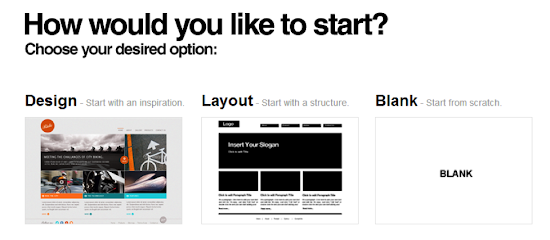Understanding Creative Website Design
Creative website design is an essential aspect of establishing a compelling online presence that captures visitors’ attention and communicates a brand’s personality. It involves combining innovative visuals, user-friendly layouts, and engaging content to craft websites that stand out in a crowded digital landscape. Understanding the principles of creative design helps businesses and designers develop websites that not only look impressive but also provide seamless user experiences that drive engagement and conversions.
Definition and Importance
Creative website design involves the use of innovative and visually appealing elements to craft a unique online presence that captures the attention of visitors. It emphasizes originality, aesthetic appeal, and user engagement, combining layout, color schemes, typography, and multimedia elements to convey a brand’s identity effectively. Understanding this approach is essential for standing out in the digital landscape, where competition is fierce.
The importance of creative website design lies in its ability to attract and retain visitors, communicate messages clearly, and enhance user experience. A well-designed, innovative website not only builds credibility and trust but also helps businesses differentiate themselves from competitors. By integrating creativity with functionality, websites can inspire users, drive higher interaction rates, and ultimately contribute to achieving organizational goals.
Key Elements of Creativity in Web Design
Understanding creative website design involves exploring how visual aesthetics, innovative layouts, and engaging interactive elements come together to create a compelling online presence. Creativity in web design goes beyond basic functionality, aiming to capture users’ attention and provide an memorable experience. It requires blending originality with usability to ensure that visitors are both drawn in and able to navigate effortlessly.
Key elements of creativity in web design include a unique visual style that reflects the brand identity, the thoughtful use of color schemes, typography, and imagery. Innovative layout structures can break the traditional grid to produce a dynamic user journey. Incorporating interactive features such as animations, micro-interactions, and multimedia elements further enhances user engagement. Additionally, a focus on responsive and accessible design ensures the website is functional across devices and inclusive for all users, making creativity a seamless part of the overall user experience.
Principles of Creative Website Design
Creative website design combines visual appeal and functionality to create engaging online experiences. It involves the thoughtful use of layout, color, typography, and imagery to effectively communicate a brand’s message and captivate visitors. Understanding the fundamental principles of design helps in crafting websites that are not only attractive but also user-friendly and impactful.
User-Centered Design
Principles of creative website design focus on crafting visually appealing and effective websites that engage users while maintaining functionality. Central to this approach is User-Centered Design, which prioritizes the needs, preferences, and behaviors of users throughout the development process. By understanding the target audience, designers can create intuitive navigation, accessible content, and a seamless user experience that encourages interaction and satisfaction. Incorporating aesthetic elements such as compelling visuals, thoughtful layout, and consistent branding enhances the overall appeal without compromising usability. Ultimately, successful creative website design balances innovative creativity with practical usability, ensuring the site is both inspiring and user-friendly.
Visual Hierarchy and Composition
Creative website design is guided by core principles that ensure an engaging and effective user experience. Key among these principles are visual hierarchy and composition, which work together to direct users’ attention and facilitate easy navigation. Visual hierarchy involves arranging elements in a way that highlights the most important information and guides the viewer through the site seamlessly. This can be achieved through size, color contrast, spacing, and positioning. Composition refers to the overall arrangement of visual elements, balancing text, images, and whitespace to create harmony and clarity. A well-crafted composition enhances readability and aesthetic appeal, making the website not only visually attractive but also functional. By thoughtfully applying these principles, designers can create websites that are both creative and user-friendly, effectively communicating the intended message while maintaining visual interest.
Consistency and Branding
Principles of creative website design are essential for crafting visually appealing and user-friendly digital experiences. Among these principles, consistency and branding play a crucial role in establishing a cohesive identity that resonates with visitors. Consistency ensures that elements such as colors, typography, layout, and imagery are uniformly applied throughout the website, creating a seamless and professional appearance. This familiarity helps users navigate more intuitively and builds trust in the brand. Strong branding, on the other hand, involves incorporating distinctive visual elements and messaging that reflect the brand’s personality and values. When combined, consistency and branding reinforce the website’s identity, enhance recognition, and foster a memorable experience that encourages visitors to engage and return.
Innovative Use of Color and Typography
Creative website design is fundamentally centered around principles that prioritize user engagement, aesthetic appeal, and functional usability. A well-crafted design respects the balance between visual elements and content, ensuring an intuitive experience that guides visitors seamlessly through the site. Innovation in design is not merely about unique visuals but also about enhancing usability and conveying the brand’s personality effectively.
One of the most impactful aspects of creative website design is the innovative use of color. Bold, contrasting palettes can evoke strong emotions and draw attention to key areas of the site. Thoughtful color schemes help establish brand identity, improve readability, and create visual harmony. Combining unexpected color combinations or utilizing gradients and overlays can make a website stand out, making it memorable and engaging for visitors.
Typography also plays a crucial role in elevating a website’s creative appeal. Selecting distinctive fonts and varying type sizes, weights, and styles can add personality and improve content hierarchy. Creative typography involves experimenting with custom fonts, animated text, or unconventional layouts to reflect the brand’s tone and enhance user experience. When used thoughtfully, innovative typography guides the eye naturally, improves comprehension, and adds visual interest to the overall design.
Design Techniques and Styles
Creative website design relies on a variety of innovative techniques and stylistic approaches to engage visitors and communicate ideas effectively. By combining visual aesthetics with functional elements, designers craft unique user experiences that stand out. Understanding different design styles and methods enables creators to develop visually appealing and intuitive websites that reflect brand identity and foster user interaction.
Minimalism with a Creative Twist
Minimalism with a Creative Twist elevates traditional clean designs by infusing unexpected elements that surprise and delight users. This approach emphasizes simplicity and clarity, using a limited color palette and ample white space to create a calm visual experience. Yet, it breaks convention by incorporating playful typography, dynamic layouts, or subtle animations that add personality without overwhelming the viewer. The key is balancing restraint with ingenuity, allowing design elements to serve both aesthetic and functional purposes while maintaining an elegant, effortless feel. Such styles foster a modern, sophisticated look that captures attention through thoughtful minimalism, encouraging exploration and engagement through creative nuances.
Animated and Interactive Elements
Creative website design leverages various techniques and styles to create visually engaging and user-friendly experiences. Designers often incorporate diverse design styles such as minimalism, retro, futuristic, and organic to establish distinct visual identities that resonate with target audiences. Using thoughtful typography, color schemes, and layout structures, websites can communicate their brand message effectively. Animated elements add dynamic motion to guide user attention and make interactions more engaging, from smooth transitions to animated icons and background effects. Interactive features like hover effects, clickable sliders, and engaging forms encourage user participation and improve usability, making the browsing experience memorable. Combining these design techniques and styles results in websites that are not only aesthetically appealing but also highly functional and immersive for visitors.
Asymmetry and Broken Grid Layouts
In creative website design, asymmetry and broken grid layouts are popular techniques that foster visual interest and originality. Asymmetry involves intentionally disrupting balanced arrangements by placing elements unevenly, which draws the viewer’s eye and creates dynamic compositions. Broken grid layouts diverge from traditional, rigid grid systems, allowing designers to overlap, shift, or break the uniformity of columns and rows, resulting in more organic and innovative visual flows. These approaches encourage experimentation, helping websites stand out with unique, unpredictable structures that capture attention and enhance user engagement.
Immersive Visual Experiences
Creative website design leverages various techniques and styles to craft immersive visual experiences that captivate visitors. Utilizing bold color palettes, dynamic typography, and innovative layouts helps create a distinctive aesthetic that draws users into the digital environment. Incorporating immersive visual elements such as full-screen videos, interactive graphics, and 3D effects enhances engagement and encourages exploration. Popular design styles like minimalism, neoclassicism, or futuristic themes can be combined with cutting-edge tools such as parallax scrolling, micro-interactions, and immersive animations to produce a memorable browsing experience. These approaches not only elevate the visual appeal but also improve usability, making websites both beautiful and functional.
Tools and Resources for Creative Web Designers
Creative web designers have a wide array of tools and resources at their fingertips to bring innovative ideas to life. From professional design software to inspiring online communities, these resources play a vital role in crafting visually appealing and functional websites. Leveraging the right tools can significantly enhance productivity, creativity, and the overall quality of web design projects.
Design Software and Plugins
Creative website design relies heavily on a variety of tools and resources that enhance productivity and enable innovative visual storytelling. Designing visually appealing and user-friendly websites requires the right software and plugins that facilitate both creativity and efficiency.
Design software such as Adobe Photoshop and Illustrator are industry standards for creating graphics, mockups, and visual elements. Sketch is also popular among web designers for its intuitive interface and vector editing capabilities. Figma offers collaborative design features that allow teams to work simultaneously on projects, streamlining the creative process. Canva provides accessible design templates and assets for quick and impactful visuals.
For coding and prototyping, tools like Adobe XD and Marvel enable designers to build interactive prototypes that demonstrate user flows and visual interactions. Web development tools such as Sublime Text, Visual Studio Code, and Atom provide powerful environments for coding websites with syntax highlighting, code completion, and debugging features.
Plugins and add-ons greatly enhance these tools. For example, in Photoshop, plugins like Portraiture streamline retouching, while in Figma, plugins such as Content Reel or Unsplash enable quick insertion of high-quality images and reusable components. Web builders and CMS platforms like WordPress and Webflow offer templates and drag-and-drop features suitable for creating complex websites without extensive coding.
Additionally, resources like color palette generators, font libraries like Google Fonts, and stock image repositories such as Unsplash or Pexels support the aesthetic and functional aspects of creative web design. Staying updated with UI kits, icon sets, and design systems further accelerates the development process and ensures consistency across projects.
Stock Images and Creative Assets
Creative web designers rely on a diverse array of tools and resources to bring their visions to life, ensuring their projects stand out with originality and professionalism. Stock images and creative assets play a vital role in enhancing website aesthetics, providing high-quality visuals that save time and elevate design quality. Popular platforms for stock images include Unsplash, Pexels, and Shutterstock, offering a vast selection of free and paid images suitable for any project. Additionally, resources like Adobe Creative Cloud, Figma, and Sketch offer powerful design tools for creating custom graphics, layouts, and prototypes. Free icon libraries such as Font Awesome and Flaticon supply essential visual elements, while resource sites like Dribbble and Behance inspire innovation through portfolios of talented designers. Utilizing these tools and resources allows creative web designers to efficiently craft engaging, visually appealing websites that capture user attention and deliver an exceptional experience.
Prototyping and Collaboration Tools
Creative website design relies heavily on a variety of tools and resources that streamline the process of prototyping and collaboration. These tools help designers visualize concepts, iterate quickly, and work seamlessly with clients and team members. Popular prototyping tools such as Figma, Adobe XD, and Sketch enable designers to create interactive prototypes that mimic the final user experience, facilitating better communication and feedback. Collaboration platforms like Miro and InVision allow teams to brainstorm ideas, leave comments, and share designs in real-time, fostering a more integrated workflow. Additionally, resource libraries offering UI kits, icon sets, and ready-made templates serve as valuable assets to inspire and accelerate creative development. Overall, utilizing these tools enhances creativity, productivity, and the ability to deliver innovative, user-centered websites.
Case Studies of Creative Websites
Creative website design plays a crucial role in capturing visitors’ attention and leaving a lasting impression. By exploring innovative layouts, unique visuals, and interactive elements, these websites showcase how creativity can elevate user experience and brand identity. Case studies of such websites provide inspiring examples of how design principles can be effectively applied to stand out in a competitive digital landscape.
Innovative Design Examples
Creative website design showcases how innovative visuals, intuitive navigation, and unique layouts can elevate online experiences. Case studies of standout websites reveal a blend of artistry and functionality that captivates users and communicates brand identity effectively. For instance, the use of immersive storytelling techniques, dynamic animations, and interactive elements transforms traditional browsing into engaging journeys. These examples often incorporate unconventional grid structures, bold typography, and vibrant color schemes to distinguish themselves from standard templates. By analyzing such websites, designers can gain insights into effective strategies for balancing aesthetics with user experience, ultimately pushing the boundaries of digital design innovation.
Analyzing Successful Creative Projects
Creative website design plays a crucial role in capturing the attention of visitors and establishing a memorable online presence. Analyzing successful projects reveals key elements such as innovative layouts, seamless user experience, and engaging visual storytelling that contribute to their effectiveness. For example, a portfolio website that employs bold typography and interactive elements can showcase an artist’s style while engaging users deeply. Similarly, e-commerce sites that use innovative navigation and personalized features enhance user engagement and drive conversions. Case studies often highlight the importance of incorporating unique branding elements, responsive design, and multimedia integration to create a cohesive and compelling digital experience. These projects serve as valuable examples for designers seeking inspiration and insights into creating impactful and creative websites that stand out in a competitive digital landscape.
Best Practices for Implementing Creativity
Implementing creativity in website design is essential for capturing visitors’ attention and creating a memorable user experience. By embracing best practices, designers can foster innovative ideas while maintaining functionality and aesthetic appeal. This approach ensures that websites not only look visually appealing but also engage users effectively, setting them apart in a competitive digital landscape.
Balancing Creativity and Functionality
Balancing creativity and functionality in creative website design requires a strategic approach that emphasizes innovation without compromising user experience. Start by establishing clear goals to ensure that creative elements serve a purpose and enhance usability. Incorporate unique visual components carefully, making certain they do not obstruct navigation or accessibility. Prioritize simplicity by integrating bold visuals or animations selectively, ensuring they support the site’s message rather than overwhelm it. Conduct user testing early and often to gather feedback on both the aesthetic and practical aspects of the design. Maintain consistency in style and branding to create a cohesive experience that resonates creativity with familiarity. Lastly, stay updated on design trends and technological advancements to innovate responsibly while preserving core functionalities needed for an effective and engaging website.
Accessibility and Responsiveness
Implementing creativity, accessibility, and responsiveness in website design requires a balanced approach that prioritizes user experience and inclusivity. Start by fostering innovative visuals and interactive elements to capture visitors’ attention while ensuring that these features enhance navigation rather than hinder it. Use a clear hierarchy and consistent layout to make content easily understandable across devices. Incorporate accessible design principles by utilizing semantic HTML, proper contrast ratios, and text alternatives for media, ensuring that users with disabilities can navigate and understand the site effectively. To achieve responsiveness, adopt flexible grid systems and fluid images that adapt seamlessly to different screen sizes and resolutions. Regular testing across various devices and using accessibility auditing tools can help identify and address potential issues. By integrating creative aesthetics with practical accessibility and responsiveness strategies, designers can craft engaging websites that are both beautiful and user-friendly for all visitors.
Performance Optimization
Implementing creativity and performance optimization in creative website design requires a balanced approach that ensures engaging visuals without compromising site speed. Start by prioritizing lightweight design elements such as optimized images and vector graphics to reduce load times while maintaining visual appeal. Incorporate modular and reusable code components to streamline development and facilitate updates, enhancing overall performance. Embrace flexible grid layouts and responsive design principles to create visually dynamic websites that adapt seamlessly across devices, enhancing user experience. Foster innovation by experimenting with unique visual concepts and interactive features, but always test thoroughly to identify and eliminate performance bottlenecks. Regularly monitor site metrics and user feedback to refine creative elements and ensure optimal loading speed, accessibility, and engagement. Ultimately, blending creative expression with technical efficiency results in websites that captivate users while maintaining high performance standards.





